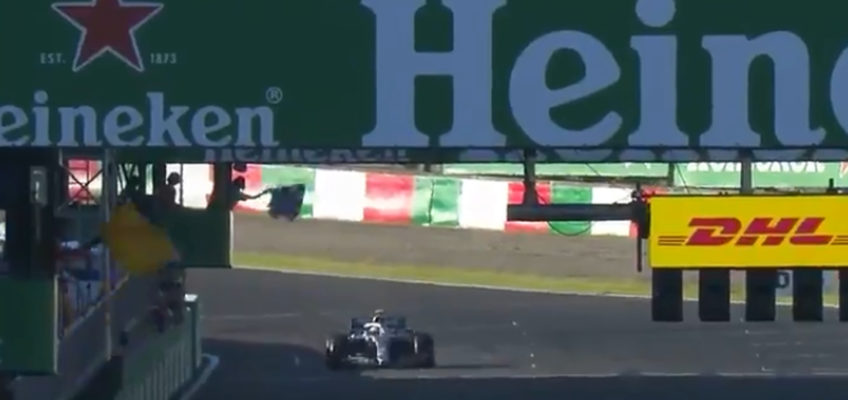Shortly after both the Finn and the rest of the leading drivers received the checkered flag at the Japanese track, however, a shocking realisation and the subsequent controversy broke out.
Drivers had only completed 52 laps of the scheduled 53. The race had ended a whole lap earlier, or what it is the same 5.8 kilometres before the planned 307,471km.
Both competitors and fans alike were left puzzled and wondering what could have possibly gone wrong. It seems that the allegedly foolproof and revolutionary electronic system which is behind the bizarre mistake.
In addition, there were changes in final positions. In this sense, Sergio Pérez (Racing Point) collided with Pierre Gasly (Toro Rosso) in the final lap, in fact it came from the penultimate -n ° 52-, benefiting from the error.
Thus, driver from Guadalajara retained its ninth place, adding two valuable points when considering the final turn. On the contrary, Nico Hulkenberg (Renault) was displaced for that reason to the tenth place.
Formula 1 organiser explanations
Formula 1 organisers and their spokesperson, race director Michael Massi, have acknowledged that a failure in the system is to blame for what happened. Massi, who “inherited” the position after the sad and unexpected death of his predecessor, the Briton Charlie Whiting at the Australian GP, has taken the blame… if somehow half-heartedly.
Asked about what had gone wrong, Massi declared: “From what we’ve seen it’s a system error. It’s something that we’ve got to investigate. I’m not going to pre-empt exctly what it was but everything points out to a system error that came up.”
Massi has also explained how the device combines both automatic sensors and human intervention. Therefore, he said he did not want to speculate as to what it was that caused the incident, nor venturing into saying if it was due to a technical or human error. “We have to look at exactly what happened, recreate it and start with that evidence.” – said the Australian manager.
“I am the first one to acknowledge that it was an unfortunate event. We take pride in striving for perfection, although this was one of those occasions when it didn’t happen that way, and we have to investigate the reason” – Massi concluded.
In any case, this type of incidents should not happen again. Thousands of fans and viewers were deprived of that last lap. And that is not all, the competition was altered, and perhaps some of the positions could have undergone changes in the final stretch of the event, especially in the very tight middle of the race.
As it happened, the drivers at the Japanese race completed 5,807 meters less than the scheduled 30.747 meters.
Obviously, not even the Formula 1 World Championship, the top competition and technological pinnacle of the motor world, is exempt from such technical mishaps.
A device which replicates the human errors of the past
Paradoxically, the revolutionary system was introduced at the beginning of this season in order to avoid the repeated mistakes of the past in these types of situations.
You do not need to go very far in time for the last of such mistakes. It occurred at the 2018 Canadian GP held at the Gilles Villeneuve Circuit. The famous Ontario model, Winnie Harlow, was on that occasion given the honour of waving the famous checkered flag.
The model became the target of abundant critics after she did so on lap 69 and not on lap 70 as she was supposed to. Harlow apologised copiously for what had happened and explained how it was an operator next to her that had indicated her the time when she had to wave the flag. It was of no use, critics were merciless against the blameless model.
Images of ‘Japanese F1 Grand Prix 2019′: Mercedes AMG Petronas F1.





Leave a Reply